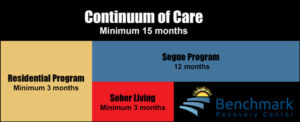You may have noticed that recently the number of alcohol rehab centers and programs in Austin are on the rise. So  why is this happening? There are actually numerous reasons for this, even though some may think the increase is due to the new Affordable Care Act. It has certainly played a part in building awareness, but I’m not sure it has had the impact so many were expecting…at least, not yet. In my opinion, the increase in facilities and programs is a result of several factors. Let’s take a look at the top 5 reasons why alcohol rehab centers in Austin are on the rise. 1. Rehabilitation is more accessible It’s hard to know exactly how much the Affordable Care Act is impacting the rise of rehabilitation options, but it certainly has raised awareness of the need for more alcohol and drug rehab services. Like a snowball rolling down a hill, it’s picking up momentum. The Mental Health Parity and Addiction Equity Act of 2008 has also helped equalize the importance of mental health and substance abuse problems as it relates to insurance coverage. 2. Alcohol abuse statistics are more readily available Significant research has been done by organizations nationwide illustrating the magnitude of alcohol abuse in our country. These findings are readily available on the internet, easily found by anyone searching for information. Dr. Jane Maxwell, research scientist at the University of Texas at Austin School of Social Work, summarizes her 2014 annual report in a recent article, “Seven Emerging Trends in Substance Use in Texas” “Alcohol is the legal drug most commonly abused. Some 67% of Texas high school students reported that they have ever drunk alcohol, and 21% had five or more drinks in a row (binge drinking) in the last month. Seven percent of Texans over age 12 were estimated to be alcohol dependent or an abuser in the past year.” The National Institute on Alcohol Abuse and Alcoholism reports national statistics based on their research. “In 2012, 24.6 percent of people ages 18 or older reported that they engaged in binge drinking in the past month.” “Nearly 88,000 people (approximately 62,000 men and 26,000 women) die from alcohol related causes annually, making it the third leading preventable cause of death in the United States.” It’s not difficult to grasp the seriousness of this problem among our youth. While it is much harder to collect accurate data on alcohol abuse with adults, it is no surprise that death as a result of substance abuse shows up significantly on lists such as this one from DrugWarFacts.org. Other than alcohol-related deaths, note how many of the categories are drug and/or alcohol-related. 3. More people need help Based on the statistics cited earlier, it appears more and more people are having problems with alcohol and drug abuse and at earlier ages. I wonder if we are just getting better at gathering statistics or research methods are more accurate. We know there are many people out there who need help and many will die before they get it. Some will never have the opportunity. Others will get help but never have the spiritual awakening so critical to the recovery process, and end up relapsing over and over. Eventually they may overdose or if they are lucky, they will finally “get it”. At BRC Recovery, we see chronic relapsers on a regular basis and have many alumni living healthy happy sober lives as a result of our programs. 4. Asking for help is more acceptable Historically, substance abuse problems were something kept hidden. Shame, embarrassment, and guilt all play a part in the emotional devastation of addiction. In recent years there has been great progress in recognizing alcoholism and drug addiction as disease rather than a poor lifestyle choice or lack of moral character.
why is this happening? There are actually numerous reasons for this, even though some may think the increase is due to the new Affordable Care Act. It has certainly played a part in building awareness, but I’m not sure it has had the impact so many were expecting…at least, not yet. In my opinion, the increase in facilities and programs is a result of several factors. Let’s take a look at the top 5 reasons why alcohol rehab centers in Austin are on the rise. 1. Rehabilitation is more accessible It’s hard to know exactly how much the Affordable Care Act is impacting the rise of rehabilitation options, but it certainly has raised awareness of the need for more alcohol and drug rehab services. Like a snowball rolling down a hill, it’s picking up momentum. The Mental Health Parity and Addiction Equity Act of 2008 has also helped equalize the importance of mental health and substance abuse problems as it relates to insurance coverage. 2. Alcohol abuse statistics are more readily available Significant research has been done by organizations nationwide illustrating the magnitude of alcohol abuse in our country. These findings are readily available on the internet, easily found by anyone searching for information. Dr. Jane Maxwell, research scientist at the University of Texas at Austin School of Social Work, summarizes her 2014 annual report in a recent article, “Seven Emerging Trends in Substance Use in Texas” “Alcohol is the legal drug most commonly abused. Some 67% of Texas high school students reported that they have ever drunk alcohol, and 21% had five or more drinks in a row (binge drinking) in the last month. Seven percent of Texans over age 12 were estimated to be alcohol dependent or an abuser in the past year.” The National Institute on Alcohol Abuse and Alcoholism reports national statistics based on their research. “In 2012, 24.6 percent of people ages 18 or older reported that they engaged in binge drinking in the past month.” “Nearly 88,000 people (approximately 62,000 men and 26,000 women) die from alcohol related causes annually, making it the third leading preventable cause of death in the United States.” It’s not difficult to grasp the seriousness of this problem among our youth. While it is much harder to collect accurate data on alcohol abuse with adults, it is no surprise that death as a result of substance abuse shows up significantly on lists such as this one from DrugWarFacts.org. Other than alcohol-related deaths, note how many of the categories are drug and/or alcohol-related. 3. More people need help Based on the statistics cited earlier, it appears more and more people are having problems with alcohol and drug abuse and at earlier ages. I wonder if we are just getting better at gathering statistics or research methods are more accurate. We know there are many people out there who need help and many will die before they get it. Some will never have the opportunity. Others will get help but never have the spiritual awakening so critical to the recovery process, and end up relapsing over and over. Eventually they may overdose or if they are lucky, they will finally “get it”. At BRC Recovery, we see chronic relapsers on a regular basis and have many alumni living healthy happy sober lives as a result of our programs. 4. Asking for help is more acceptable Historically, substance abuse problems were something kept hidden. Shame, embarrassment, and guilt all play a part in the emotional devastation of addiction. In recent years there has been great progress in recognizing alcoholism and drug addiction as disease rather than a poor lifestyle choice or lack of moral character.  Asking for help has become more accepted in our society and people are getting education at earlier ages about the dangers of alcohol and drugs. Fortunately there is less stigma, thanks to organizations like the Faces and Voices of Recovery who have worked long and hard with national awareness campaigns to promote widespread understanding about long-term recovery. While the stigma still exists, is appears to be lessening over time. 5. Emphasis on extended care Professionals in the alcohol and drug rehab industry have known for a long time that 28-30 day inpatient treatment programs produce low success rates for long-term sobriety. Relapse rates are high and weekly aftercare meetings are not enough. 90 days of residential rehabilitation is ideal for the initial phase with subsequent step-down phases to help the person acclimate to living sober in a structured environment where triggers are minimized and/or controlled. The extended-care program offered at BRC Recovery offers a 15-month continuum of care with three levels of care…residential, sober living and a 12-month aftercare accountability program.
Asking for help has become more accepted in our society and people are getting education at earlier ages about the dangers of alcohol and drugs. Fortunately there is less stigma, thanks to organizations like the Faces and Voices of Recovery who have worked long and hard with national awareness campaigns to promote widespread understanding about long-term recovery. While the stigma still exists, is appears to be lessening over time. 5. Emphasis on extended care Professionals in the alcohol and drug rehab industry have known for a long time that 28-30 day inpatient treatment programs produce low success rates for long-term sobriety. Relapse rates are high and weekly aftercare meetings are not enough. 90 days of residential rehabilitation is ideal for the initial phase with subsequent step-down phases to help the person acclimate to living sober in a structured environment where triggers are minimized and/or controlled. The extended-care program offered at BRC Recovery offers a 15-month continuum of care with three levels of care…residential, sober living and a 12-month aftercare accountability program.  Marsha Stone, CEO BRC Recovery
Marsha Stone, CEO BRC Recovery

